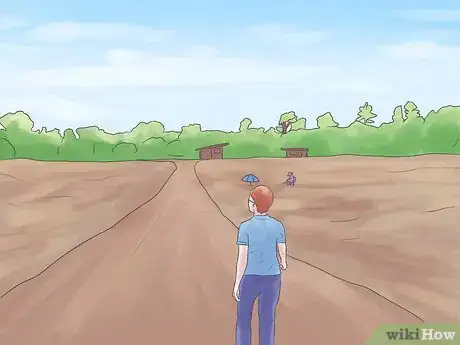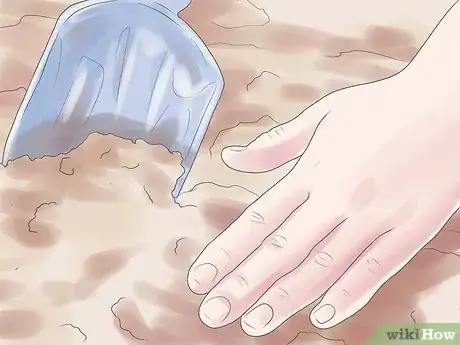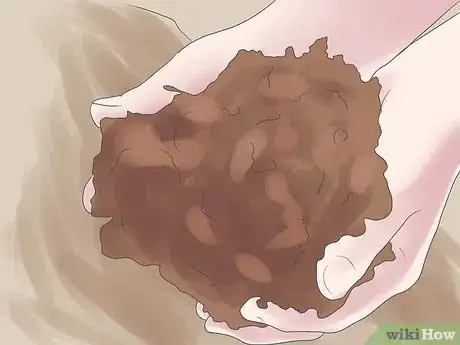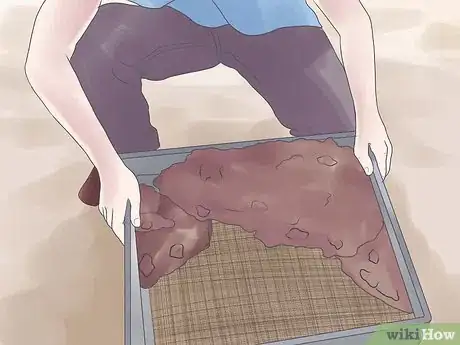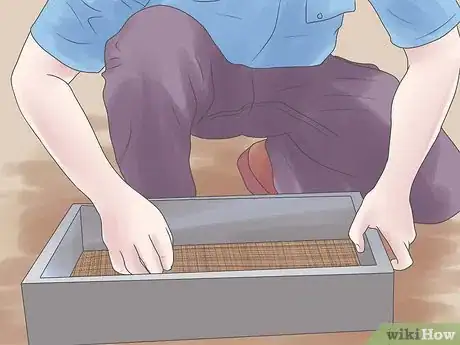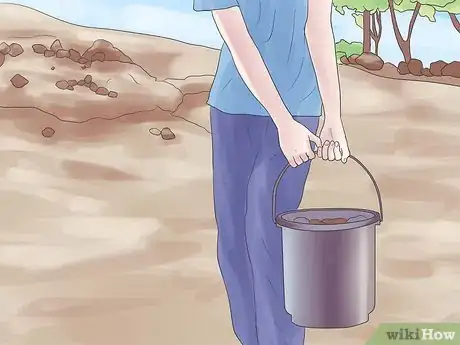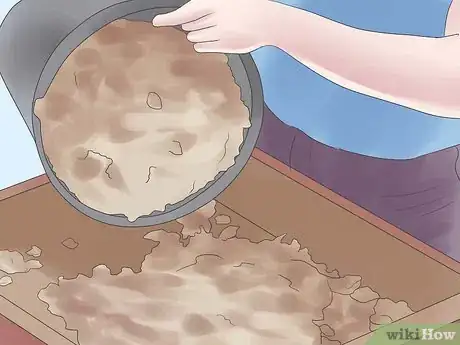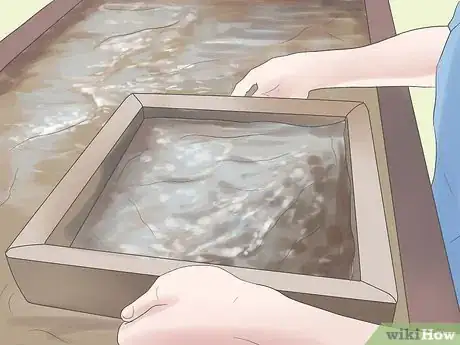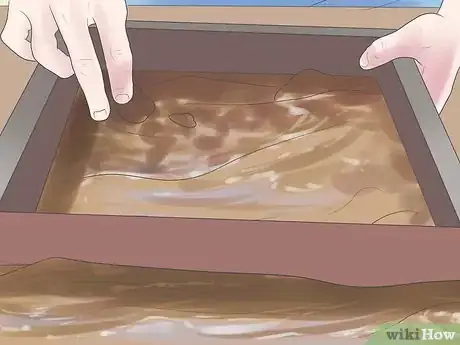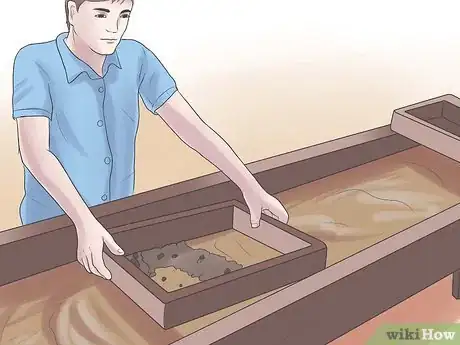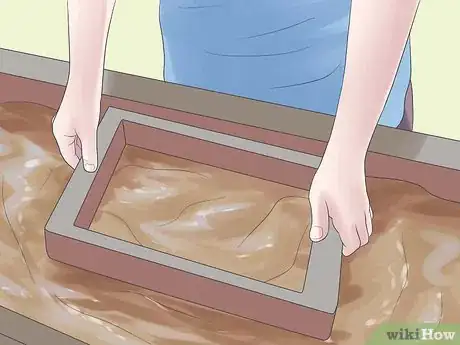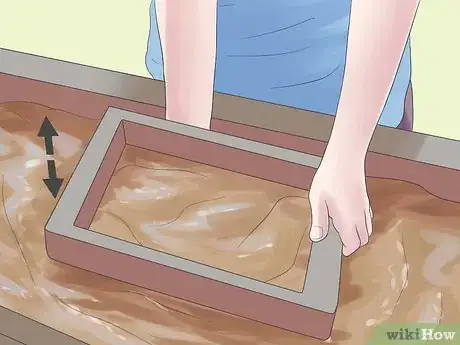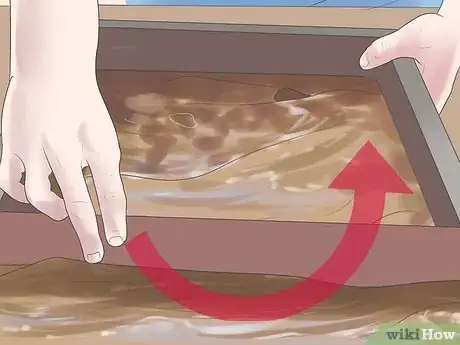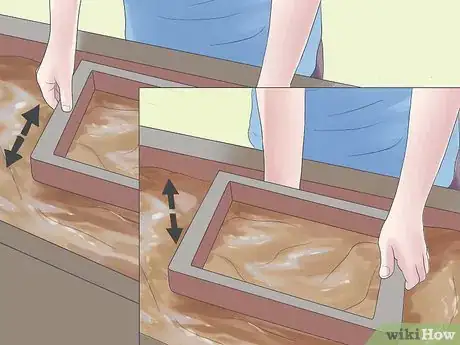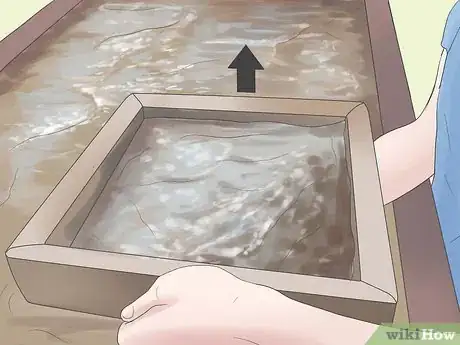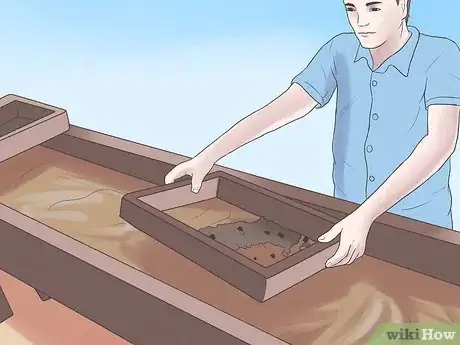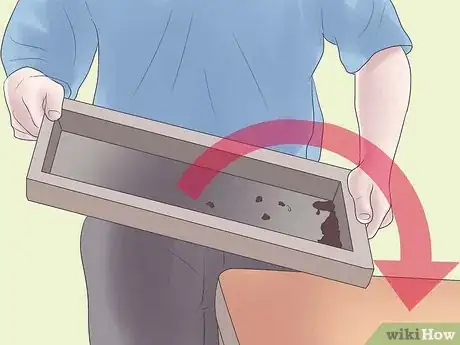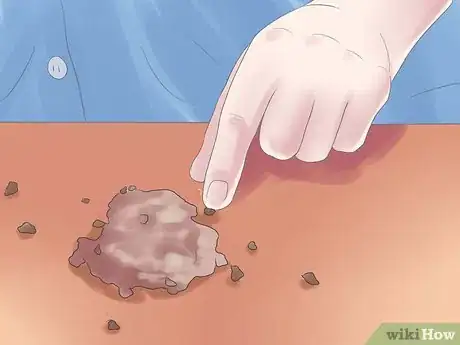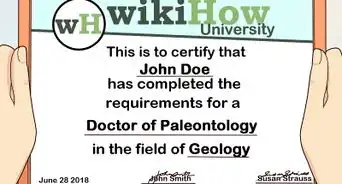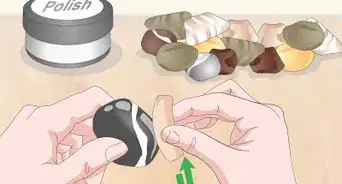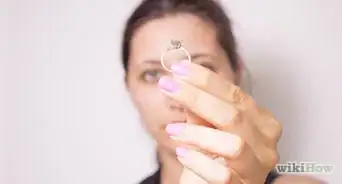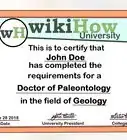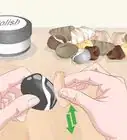This article was co-authored by Sam Lagor, MSc. Sam Lagor is a Geologist with over eight years of experience. He specializes in engineering geology (dams, bridges, and tunnels) and mineral exploration (gold, lead/zinc, andindustrial minerals). Sam holds a BS in Geology from St. Lawrence University and an MS in Geology from The University of Vermont. He is also a member of the Geological Society of America and the American Institute of Professional Geologists.
wikiHow marks an article as reader-approved once it receives enough positive feedback. In this case, 100% of readers who voted found the article helpful, earning it our reader-approved status.
This article has been viewed 111,526 times.
When visiting Crater of Diamonds State Park in Murfreesboro, Arkansas, there are three popular methods of searching for diamonds: Surface searching, dry sifting, and wet sifting. The more you know about each option, the more enjoyable your stay will be at the world's only public diamond mine!
Steps
Surface Searching
-
1Choose a small area to search in.
-
2Look closely on top of the soil for diamonds uncovered by rain or wind. Do not move anything until the surface of your spot has been surveyed.[1] Use a hands lens or magnifying glass to help you find rocks off all sizes.Advertisement
-
3Search underneath rocks and dirt clods for diamonds.[2]
Dry Sifting
-
1Select a spot on the search area that has loose, dry soil.
-
2Pour only two handfuls (or scoops) of dry dirt into your sifting screen at one time.[3]
-
3Sift the dirt through your screen with a quick agitating motion over one spot.[4]
-
4Spread out remaining gravel and search for a diamond!
Wet Sifting
-
1Dig a bucketful of dirt from the search area and carry it to one of the provided washing pavilions.
-
2Pour part of the dirt into a sifting screen, until soil mounds over its top.
-
3Sift all loose soil from your screen in water with a quick agitating motion.[5]
-
4Remove all material larger than about one-quarter inch from your screen.
-
5Hold the frame of your screen on both sides around the center and lower it evenly into the water about one-half inch.
-
6Quickly rock your screen back-and-forth, until water washes small materials toward the center of your screen.
-
7Balance the screen on your fingertips, submerging it in water, and tap it up and down until the water spreads your material out into an even layer again.
-
8Turn your screen one-quarter turn.
-
9Repeat steps 6-8 for about one minute (eight or ten repetitions). Rock it, tap it, and turn it![6]
-
10Tap the screen one more time in the water to spread the materials out.
-
11Remove your screen from the water, and allow water to drain from your screen for a few seconds.
-
12Flip your screen upside-down in a smooth motion over a flat surface, landing it evenly (like turning a cake from a pan).
-
13Search the surface of your gravel pile for diamonds, especially focusing on the center!
Expert Q&A
-
QuestionIf I found a raw diamond, how do I authenticate it at home?
 Sam Lagor, MScSam Lagor is a Geologist with over eight years of experience. He specializes in engineering geology (dams, bridges, and tunnels) and mineral exploration (gold, lead/zinc, andindustrial minerals). Sam holds a BS in Geology from St. Lawrence University and an MS in Geology from The University of Vermont. He is also a member of the Geological Society of America and the American Institute of Professional Geologists.
Sam Lagor, MScSam Lagor is a Geologist with over eight years of experience. He specializes in engineering geology (dams, bridges, and tunnels) and mineral exploration (gold, lead/zinc, andindustrial minerals). Sam holds a BS in Geology from St. Lawrence University and an MS in Geology from The University of Vermont. He is also a member of the Geological Society of America and the American Institute of Professional Geologists.
Geologist One way you can see if a diamond is real is to check its hardiness. Diamonds are a 10 on the hardiness scale, which means they are the strongest mineral. Scratch the stone in question on various surfaces, like a copper penny, glass plate, or ceramic disc. If the stone can scratch these items, it could be a real diamond.
One way you can see if a diamond is real is to check its hardiness. Diamonds are a 10 on the hardiness scale, which means they are the strongest mineral. Scratch the stone in question on various surfaces, like a copper penny, glass plate, or ceramic disc. If the stone can scratch these items, it could be a real diamond. -
QuestionWhat method of searching has resulted in finding the most diamonds?
 Community AnswerWet sifting is the most successful way of finding diamonds.
Community AnswerWet sifting is the most successful way of finding diamonds. -
QuestionWhat are the round sifting screens called?
 Community AnswerSifting screens are called "classifiers", because they are used to "classify" the soil in different grades of fineness. They're often used by people searching for gold, silver, and gems, including diamonds.
Community AnswerSifting screens are called "classifiers", because they are used to "classify" the soil in different grades of fineness. They're often used by people searching for gold, silver, and gems, including diamonds.
Warnings
- Diamond mining is hard work! Drink plenty of water while searching, especially during hot days. The search area is handicap accessible, but keep any physical limitations in mind when choosing which method of searching is best for you.⧼thumbs_response⧽
Things You'll Need
- Shovel
- Screen (1/16" mesh works well)
- Bucket
- Magnifying glass
- Tweezers/pocket knife to help pick up possible diamonds
- Sunblock & hat
- Drinks & snacks
- Bag/vial to hold interesting rocks & minerals
References
- ↑ https://www.nationalgeographic.com/news/2013/10/131028-crater-diamond-arkansas-park-geology/
- ↑ https://www.arkansasstateparks.com/parks/crater-diamonds-state-park/digging-for-diamonds/how-do-i-search-for-diamonds
- ↑ https://www.youtube.com/watch?time_continue=1&v=R1MGxbmSQGQ
- ↑ https://www.youtube.com/watch?time_continue=1&v=R1MGxbmSQGQ
- ↑ https://www.youtube.com/watch?v=y3-Fnqt2_4M
- ↑ https://www.youtube.com/watch?v=y3-Fnqt2_4M
- http://www.craterofdiamondsstatepark.com
- http://www.arkansasstateparks.com
